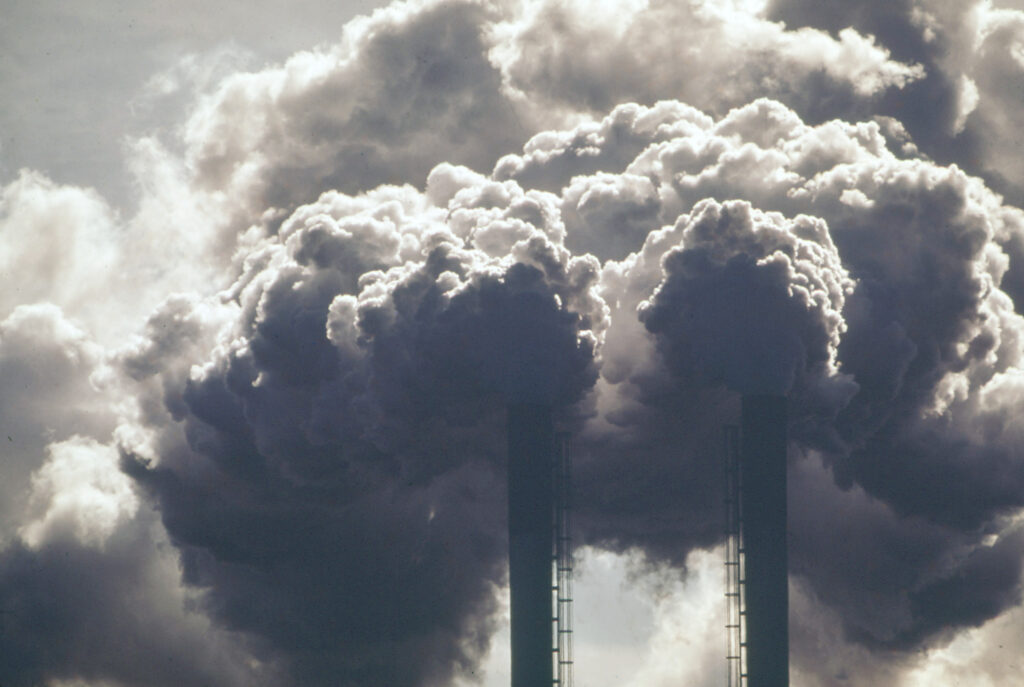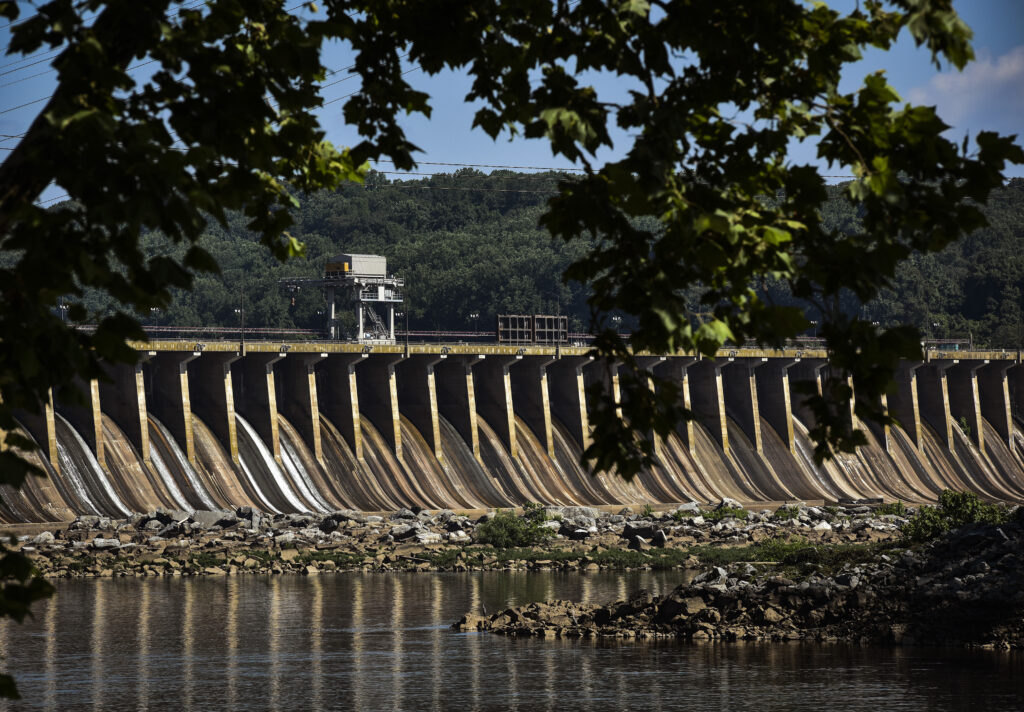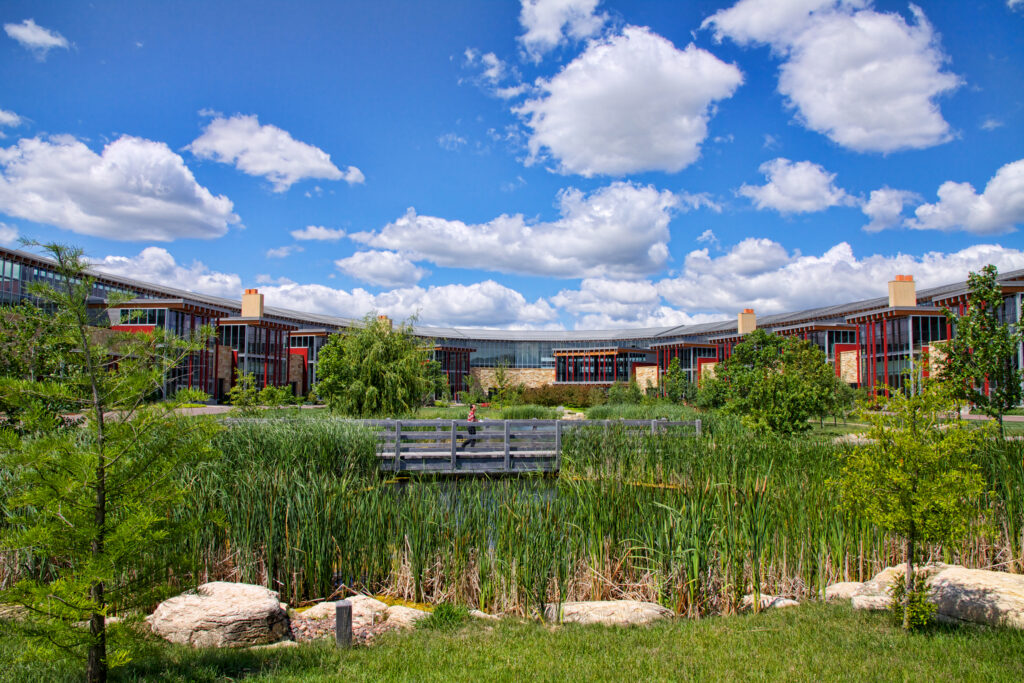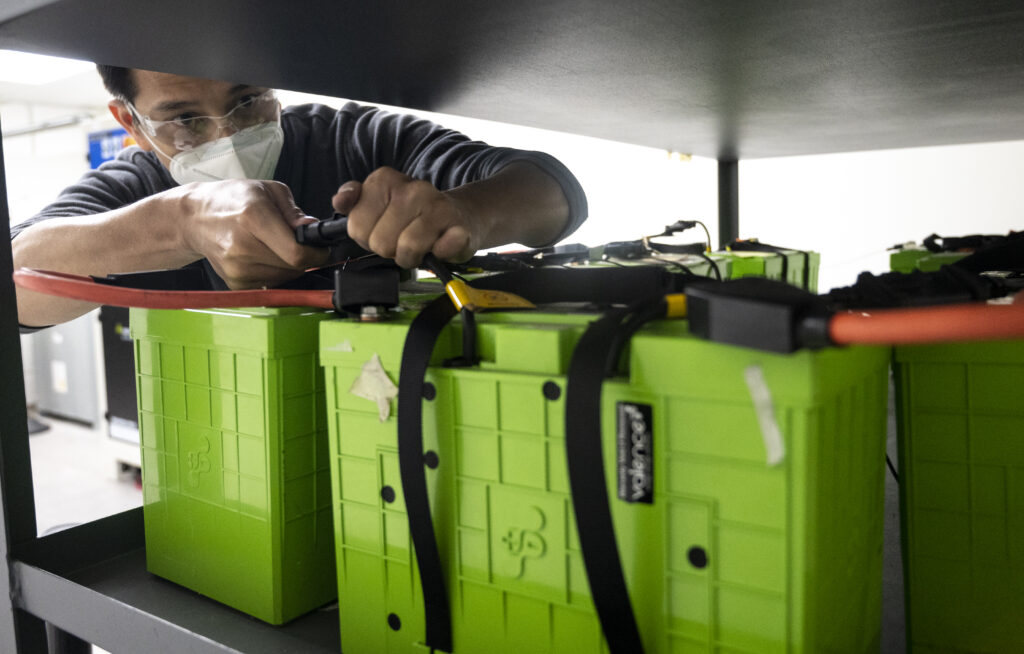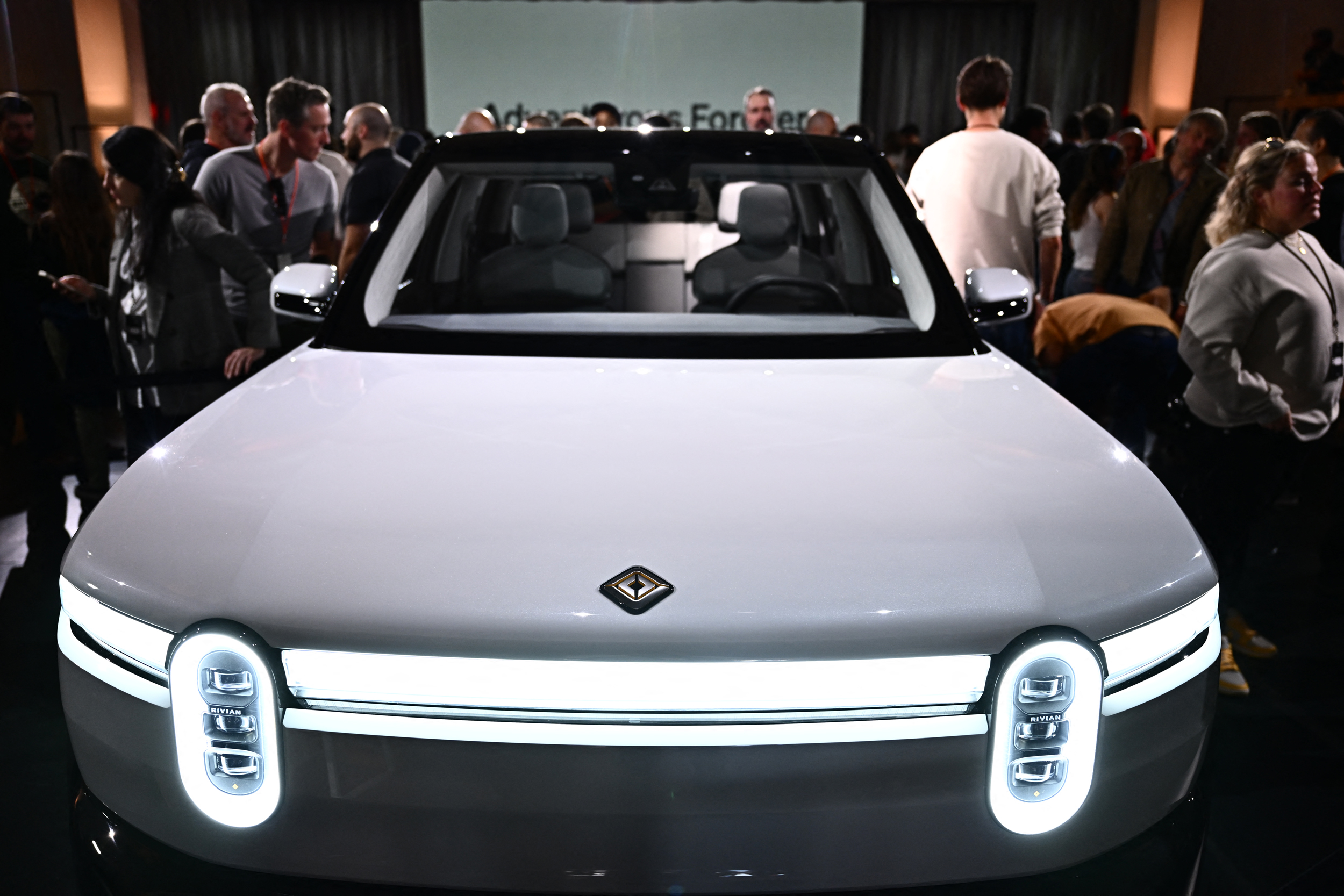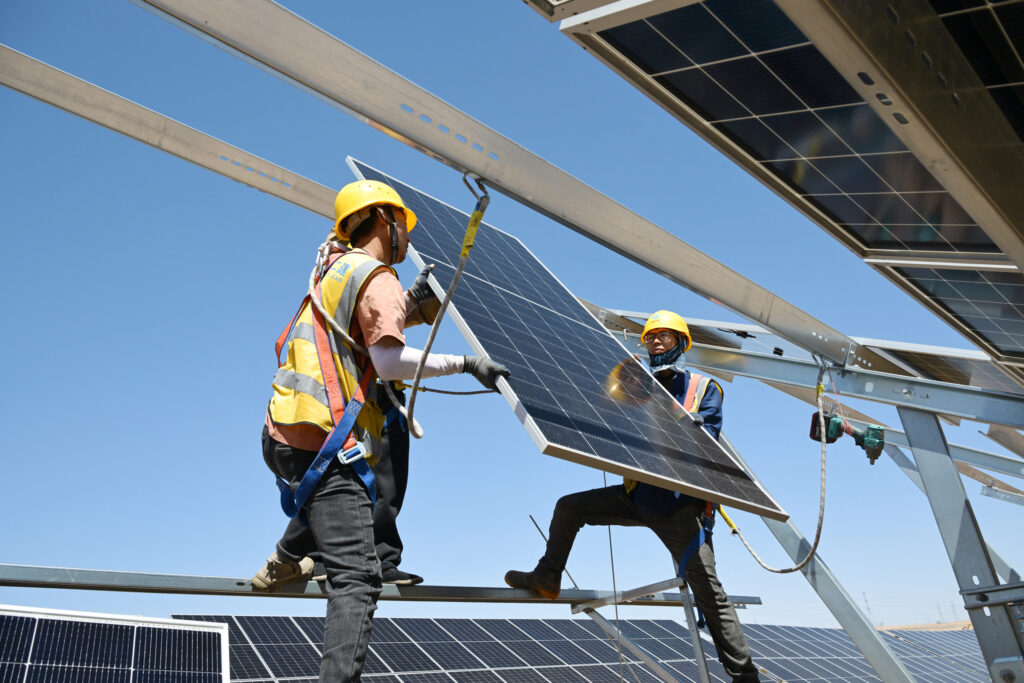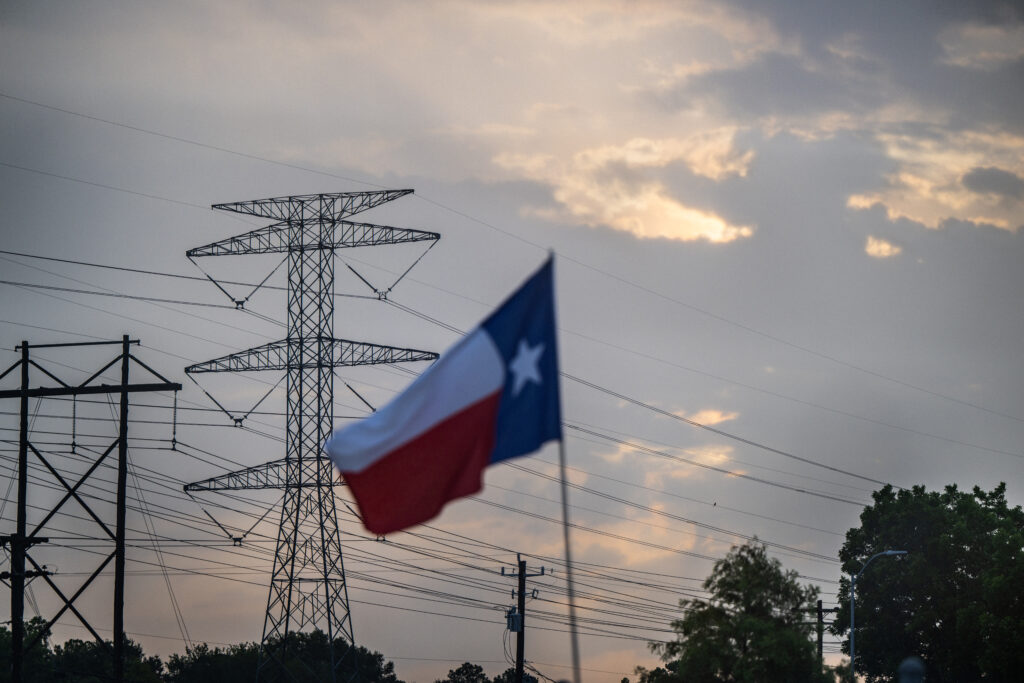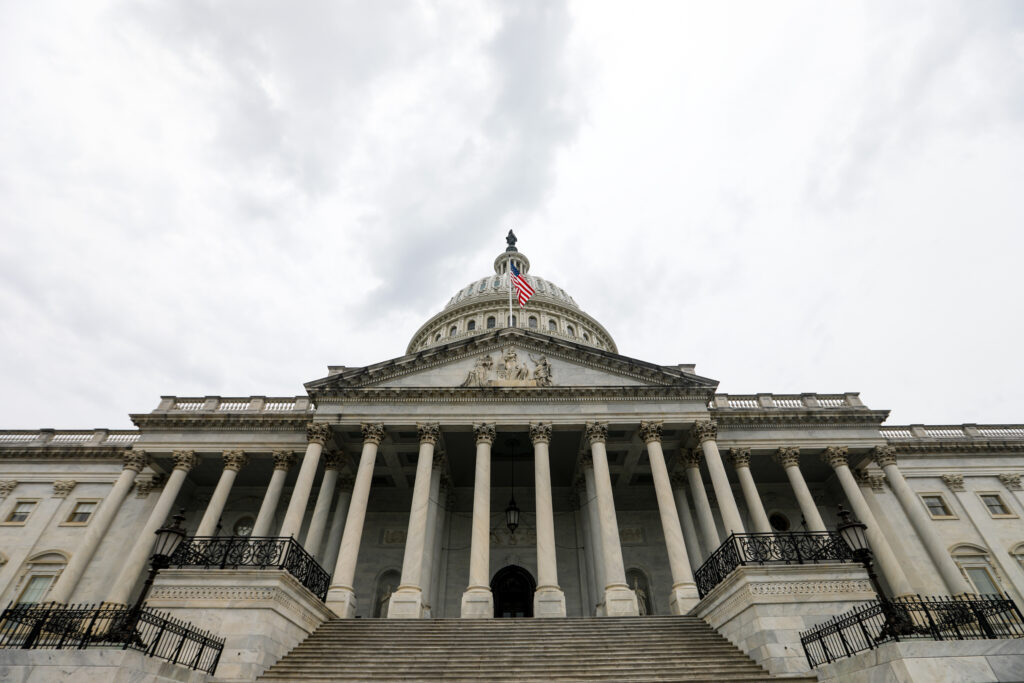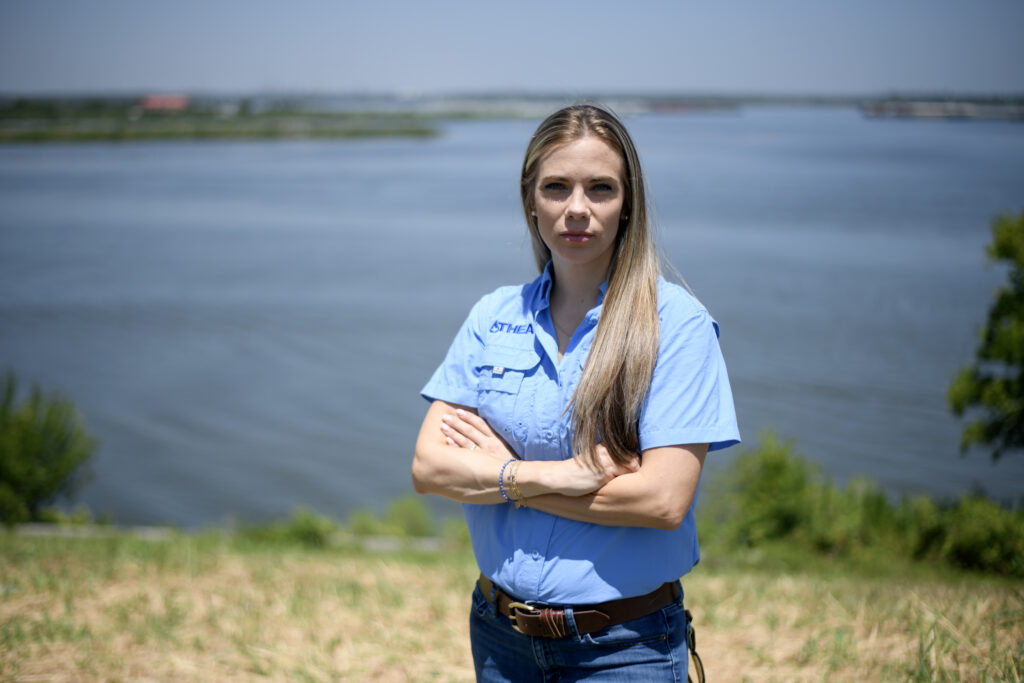The four western states that have traditionally exported large amounts of electricity generated with fossil fuels to neighboring states are poised to draw tens of billions of dollars by exporting clean energy across state lines, but only if the region can successfully expand the vast network of interstate transmission lines needed to distribute the electricity, according to a new study released Wednesday by RMI, the clean energy research and advocacy group.
At stake is a market for electricity from Wyoming, Colorado, New Mexico and Montana that could grow to nearly $50 billion by 2050 or dwindle to just $3 billion if more transmission lines aren’t built. The economic impacts could be far-reaching, not just for those four states, but the entire Western U.S. If the entire region was able to coordinate interstate transmission lines, for example, it could reduce the cost of shifting to a carbon-free grid by 30 percent, according to the report, saving billions of dollars for ratepayers across the West and enabling states to better meet their clean energy goals.
“The larger area you plan over, the larger the savings,” said Tyler Farrell, a senior associate at RMI’s carbon-free electricity program and co-author of the study.
Renewable energy projects are booming in the West, with vast solar fields, wind farms and other clean energy technologies coming online or being proposed across the region. The Biden administration has said the 245 million acres of public lands overseen by the Bureau of Land Management are key to the nation’s energy transition away from fossil fuels, with rules in place to streamline development.
We’re hiring!
Please take a look at the new openings in our newsroom.
See jobs
But getting more clean energy to where it’s needed isn’t just a matter of building more facilities to generate it—it also requires new transmission lines to distribute the electricity, and as the RMI study found, potentially sell the excess to the highest bidder.
Transmission lines are the backbone of the grid, acting as highways that connect the source of electricity to where it is used. With remote solar and wind farms developing over vast expanses far from existing transmission infrastructure, building new lines is critical to the nation’s transition away from fossil fuels, and one of the biggest obstacles to the adoption of more clean energy in the U.S., especially in the West, where interstate lines need to cross vast stretches of federal, state, municipal, tribal and private lands, and can often run into the challenging permitting processes and pushback from those living along a project’s route.
As fossil fuel plants go offline, space opens up on transmission lines for renewables. But that won’t satisfy growing electricity demand, such as from AI data centers and charging stations for electric vehicles, or connect renewable energy projects that are being built in places where transmission lines don’t yet exist.
RMI’s study comes on the heels of an analysis from Lawrence Berkeley National Laboratory that found nationwide nearly 12,000 projects—94 percent of which are zero carbon—awaiting approval to be able to access the grid. Those represent 1,570 gigawatts of generating capacity, about double the total amount of energy currently being produced in the U.S., and 1,030 GW of storage that can release electricity to the grid when intermittent sources like wind and solar aren’t producing because the wind isn’t blowing or the sun isn’t shining. That’s up from a backlog of about 10,000 projects from 2022, and wait times have increased, approaching five years to receive the go-ahead. One gigawatt is enough power for about 750,000 homes.
Integrating new energy sources into the grid isn’t like plugging them into an outlet, said Joseph Rand, an energy policy researcher with the Lawrence Berkeley National Laboratory. Each proposed project in what’s known as the interconnection queue needs to be reviewed by those who operate transmission lines to assess what’s needed to transmit the energy, the costs and who pays them, and any impacts connecting it may have.
For years, there was little development of new energy projects. Climate change, policy decisions and growing demand for power have changed that, resulting in a 90 percent increase in the generating capacity of proposed electricity generation projects over the last three years, the report found. “That’s really put the spotlight back on the queue,” Rand said.
The Federal Energy Regulatory Committee has adopted new rules to speed up the queue process that are expected to be implemented in the coming months, including approving projects by a first-ready-first-served process that studies clusters of them at the same time and establishing hard deadlines for utilities in charge of transmission lines to approve projects and imposing penalties for not meeting them.
“That’s going to change this process,” Rand said, “but it doesn’t build the transmission,” which is what’s really needed to get more renewable energy projects on the grid.
Building that transmission infrastructure, however, is easier said than done. That’s especially true for projects that stretch across state lines in the Western U.S., where projects can undergo long permitting processes to comply with environmental and public land policies. They’re also extremely costly, with one being constructed through New Mexico and Arizona for $11 billion, being the most expensive renewable energy project in U.S. history.
This story is funded by readers like you.
Our nonprofit newsroom provides award-winning climate coverage free of charge and advertising. We rely on donations from readers like you to keep going. Please donate now to support our work.
Donate Now
It’s a massive undertaking, experts said. A better understanding of the financial incentives to build more could be the push needed to get it done. Key to that is getting Western states to buy into more regional planning, RMI’s analysis found, something already done in other parts of the country, like the Midwest.
If more regional planning is done, the study found there is less need for baseload generation of electricity without emissions, such as with nuclear power plants, where the electricity can be generated as needed, rather than being dependent on the sun or the wind. Those sources of power, however, are much more expensive and can be challenging to build. For example, Colorado has a high generating capacity during the summer period when Nevada struggles to generate renewable energy from wind and solar and depletes its battery reserves.
Utilities and transmission providers are already beginning those conversations, Farrell said, and FERC is preparing to issue new guidance on the matter.
“Regional transmission is a tool in the toolkit to meeting those 100 percent clean energy goals,” Farrell said. “And it’s an opportunity for ratepayers to meet their 100 percent clean energy goals and also ensure that they save money in meeting those goals.”





